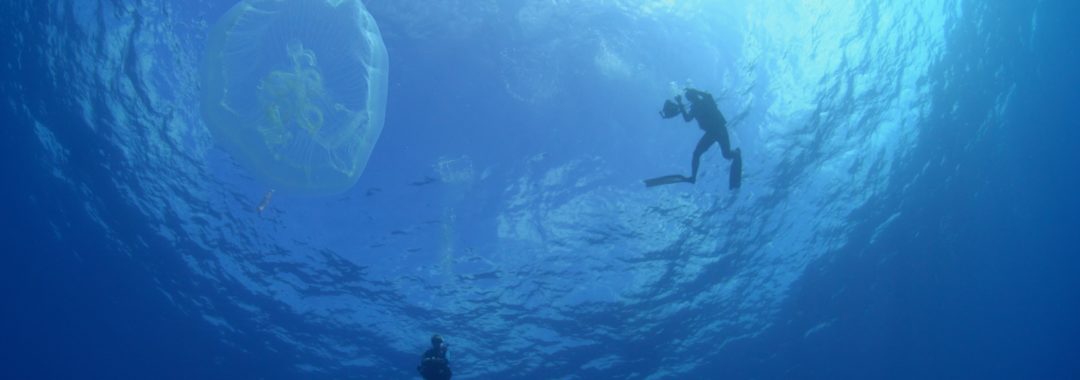Are Laamu’s manta rays in courtship mode? Watch this latest May highlights video to find out! Sit back and enjoy the magic of diving with Deep Blue Divers!
Category Archives: Videography
Deep Blue Divers | 2018 April Highlights
Check out our latest April highlights video featuring schools of sharks, turtles, rays galore and a fascinating glimpse into the hunting skills of the mantis shrimp’s fearsome raptorial appendages catching a fish with lightning speed, filmed on our very own house reef. Bonus points if you can spot the juvenile trevally shadowing a friendly female manta who came by to check out the videographer. Sit back and enjoy the magic of diving with Deep Blue Divers!
Deep Blue Divers | 2018 March Highlights
Mesmerizing schools of fish, sharks, a beautiful blue-spotted sea hare and a Hitchcock-style cameo appearance by the videographer all star in this latest March highlights video. Enjoy!
Deep Blue Divers | 2018 February Highlights
Here in the Maldives we’re blessed to have not only big animals like mantas, turtles and sharks but also beautiful macro life. The house reef at Six Senses Laamu has the best of both worlds, offering up nudibranchs, little octopuses still undescribed by science and even a resident guitar shark! Here are some highlights from February, enjoy!
Critters of the Lembeh Strait | November Highlights
Our November highlights video showcases a little-known side of Lembeh, full of gloriously vibrant, healthy and diverse corals and reefs, all shot on Lembeh dive sites. Naturally fluorescent corals and critters also make a glowing appearance onstage and will change the way you see these animals at-casinos.com. Enjoy the best of Lembeh wide angle and macro!
Critters of the Lembeh Strait | October Highlights
October’s highlights video features awesome footage of a flamboyant cuttlefish carefully placing her eggs underneath a coconut shell half and an extremely rare golden tripod fish juvenile (Pseudotriacanthus strigilifer) – a first for us here! Sascha also filmed two Godiva rachelae nudibranchs engaged in some odd behaviour – mating dance? Fighting? Let us know what you think they were doing in the comments!
Critters of the Lembeh Strait | 2017 September Highlights
September’s highlights video features favourite stars such as the ornate ghost pipefish (there were so many around this month!) clown frogfish and mimic octopus. Be sure to also watch for the shrimp dancing on the eye of a snake eel (does it tickle?) and a close up of the iris of an elegant sand diver (Trichonotus elegans) resembling rays of light. Enjoy the show!
Critters of the Lembeh Strait | The Hairy Frogfish
The hairy frogfish (Antennarius striatus) has a rounded body and its skin is covered with spinules resembling hairs. These spinules can be copious and long or very short and almost invisible. As with all frogfish, its expandable mouth allows it to swallow prey as large as itself. The color varies from yellow to brownish-orange, almost white, or even completely black with no visible pattern. The modified dorsal spine is used as a fishing rod and the tip of it has a three-pronged, worm-like esca (lure) which is used to attract prey. The worm-like lure is a way to easily distinguish the hairy frogfish from the similar-looking shaggy frogfish (Antennarius hispidus) with which it is sometimes confused, but which has an esca resembling a pom-pom.
Critters of the Lembeh Strait | Episode 04 – 2017 | July Highlights
July’s highlights include some very unusual footage, even for Lembeh where the rare and strange are commonplace. A fingered dragonet being eaten by a lizardfish was spotted by one of our sharp-eyed guides and luckily I was there to film the fascinating process. Other cool critters you’ll see in July’s video include a glimpse into the egg pouch of an ornate ghost pipefish where you can even see the eyes of the embryos, a fabulous decorator crab, a pair of mis-matched frogfish and much more. Enjoy the extravaganza!
Critters of the Lembeh Strait | The Coconut Octopus
The coconut octopus or veined octopus (Amphioctopus marginatus) is one of our favorite critters in Lembeh. It uses “tools” like shells and coconuts to build a hiding place and is often seen ‘walking’ on two arms with these tools in the other arms. This behavior is called bipedal locomotion. Some species are very greedy and try to take as many tools as they can carry, which sometimes is just too much to handle. The coconut octopus is a solitary cephalopod.







